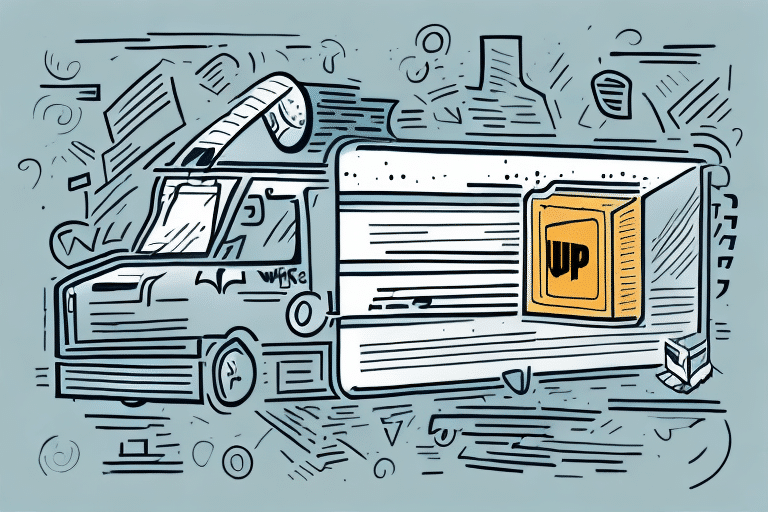Managing Large UPS Shipments: Handling Packages with Second-Longest Sides Over 30 Inches
Shipping oversized items with UPS requires a clear understanding of their additional handling requirements. Packages where the second-longest side exceeds 30 inches incur extra handling fees, potentially increasing your shipping costs significantly. This guide provides an in-depth look into UPS's additional handling services and offers practical tips to help you minimize shipping expenses.
Understanding UPS's Additional Handling Requirements
UPS categorizes additional handling as any package that needs special treatment to mitigate the risk of damage to the package or UPS personnel. Specifically, packages with a second-longest side exceeding 30 inches fall under this category due to their complexity and the increased likelihood of damage during transit.
These additional handling fees are calculated based on the package's weight and dimensions, separate from standard shipping rates. To avoid these fees, ensure that your packages are adequately packaged, clearly labeled, and that all dimensions are accurately measured before shipping with UPS.
Determining the Second-Longest Side of Your Package
The second-longest side of a package is the measurement that follows the longest side. For instance, a package measuring 36 inches in length, 20 inches in width, and 12 inches in height has a second-longest side of 20 inches.
Accurately knowing all three dimensions of your package is critical for shipping and logistics purposes. UPS and other shipping carriers have strict size and weight restrictions, and precise measurements help ensure your package is handled safely and efficiently.
Why Accurate Measurements Matter
Incorrect measurements can lead to unexpected fees, shipping delays, or even package rejection. Using a reliable measuring tape and rounding up to the nearest inch can enhance measurement accuracy.
Why UPS Implements Additional Handling Fees
UPS's additional handling fees cover the extra costs and risks associated with shipping larger packages. These fees account for:
- Increased Risk of Damage: Larger packages are more prone to mishandling, leading to potential damage which incurs repair or replacement costs.
- Additional Labor and Equipment: Moving and transporting oversized packages often require specialized equipment and more labor, which drive up operational costs.
- Extended Transit Times: Oversized packages may need separate transportation fleets, such as distinct trucks or freight services, increasing overall shipping expenses.
By implementing these fees, UPS ensures the safe and efficient delivery of large packages while maintaining service reliability.
Calculating Additional Handling Charges
The cost of additional handling varies based on the package's size, weight, and destination. UPS provides an online rate calculator to help estimate shipping costs, including any additional handling fees. However, these rates are subject to change based on current market conditions and should be verified at the time of shipping.
For packages requiring special handling, such as those containing fragile or hazardous materials, additional charges may apply. It's advisable to contact UPS directly to discuss specific requirements and obtain an accurate cost estimate.
Strategies to Reduce Package Size and Avoid Extra Fees
Minimizing the size of your package is an effective way to avoid additional handling fees. Here are some strategies:
- Use Compact Packaging: Select the smallest possible box that can securely contain your items to reduce overall dimensions.
- Remove Unnecessary Items: Eliminate any non-essential materials from your package to decrease size and weight.
- Disassemble Large Items: Break down larger items into smaller components and pack them separately to make handling easier.
- Utilize Vacuum-Sealed Bags: Compress soft items like clothing or textiles using vacuum-sealed bags to save space.
Proper Measurement Techniques for Your Package
Accurate measurement of your package's dimensions is crucial. Follow these steps to ensure precision:
- Measure All Sides: Use a measuring tape to record the length, width, and height of your package.
- Identify the Second-Longest Side: Determine which measurement ranks second in size to assess if additional handling fees apply.
- Round Up Measurements: Always round up to the nearest inch to avoid underestimating package size.
- Account for Irregular Shapes: For packages with bulges or irregularities, measure multiple points and use the largest dimensions.
Accurate measurements help prevent unexpected fees and ensure compliance with UPS's shipping guidelines.
Choosing the Right Packaging Materials
Selecting appropriate packaging materials can help you avoid additional handling fees by reducing package dimensions and ensuring safety during transit. Consider the following:
- Vacuum-Sealed Bags: Ideal for compressing soft items, reducing overall package size.
- Heavy-Duty Boxes: Use sturdy boxes that can withstand the weight and protect contents without the need for excessive padding.
- Bubble Wrap and Cushioning: Prevent items from shifting and reduce the risk of damage with proper cushioning materials.
- Custom-Fit Inserts: For fragile items, foam inserts or custom-fit boxes provide additional protection and stability.
Additionally, be mindful of the package's weight. Lightweight yet durable materials can help keep both size and weight in check, potentially reducing shipping costs.
Avoiding Common Shipping Mistakes with UPS
Shipping large packages with UPS can be straightforward if you avoid common pitfalls:
- Overpacking: Excessive packing can increase package size and weight, leading to higher fees.
- Incorrect Box Size: Using a box that's too large can result in oversized measurements and additional costs.
- Poor Item Securing: Items that move inside the box can cause damage and may require re-packing.
- Improper Labeling: Inaccurate or missing labels can delay shipping and complicate logistics.
Always double-check your package's dimensions, secure all items properly, and ensure labels are clear and accurate to streamline the shipping process.
When to Utilize UPS's Additional Handling Service
Consider using UPS's additional handling service under the following circumstances:
- Second-Longest Side Exceeds 30 Inches: Oversized packages typically qualify for additional handling.
- Weight Over 70 Pounds: Heavier packages may require special handling to ensure safe transport.
- Fragile Items: Packages containing glass, electronics, or other delicate items benefit from extra precautions.
Utilizing this service helps ensure your package is managed safely and reduces the risk of damage or shipping delays.
Requesting UPS's Additional Handling Service
You can request additional handling services when creating your shipment through the UPS website or at a UPS service center. Follow these steps:
- Create a Shipping Label: Enter your package details on the UPS shipping platform.
- Select Additional Handling: During the shipping process, choose the option for additional handling based on your package's size or fragility.
- Complete and Confirm: Finalize the shipping details and confirm your request for additional handling.
If you're uncertain whether your package qualifies for additional handling, contact UPS customer service for guidance and support.
Understanding Other UPS Shipping Charges and Fees
Beyond additional handling fees, UPS may impose various other charges depending on factors like destination, package weight, and size. Common additional fees include:
- Residential Delivery Surcharges: Extra fees for deliveries to residential addresses.
- Fuel Surcharges: Variable fees based on current fuel prices.
- Remote Area Surcharges: Additional costs for deliveries to remote or less accessible locations.
The type of service chosen also affects shipping costs. Expedited services like UPS Next Day Air™ are more expensive than standard ground shipping. For a comprehensive overview of UPS's current rates and fees, visit the UPS Shipping Fees page.
Tips for Saving on UPS Shipping Costs
Optimize your shipping strategy to reduce costs with these tips:
- Choose Ground Shipping: Opting for UPS Ground can be more cost-effective than expedited options.
- Optimize Package Size: Use the smallest packaging possible to reduce dimensional weight and shipping fees.
- Compare Shipping Carriers: Evaluate rates from different carriers to ensure you're getting the best deal.
- Consolidate Shipments: Combine multiple items into a single shipment to save on individual shipping costs.
Implementing these strategies can lead to significant savings, especially for businesses that ship large or multiple packages regularly.
Handling Rejected Packages Due to Size or Weight
If UPS rejects your package because of size or weight violations, follow these steps:
- Reassess Packaging: Repackage your items using appropriate materials and ensure all dimensions and weights comply with UPS guidelines.
- Contact the Recipient: Inform the recipient about the delay and provide updated shipping information.
- Re-ship with Correct Specifications: Once repackaged, create a new shipping label and resend the package.
To prevent future rejections, always adhere to UPS's packaging standards and accurately measure and weigh your packages before shipping.
By following these guidelines and understanding UPS's shipping requirements, you can ensure that your large packages are handled efficiently and arrive safely at their destination. While additional handling fees can add to your costs, the assurance of secure and timely delivery makes it a worthwhile investment.






















